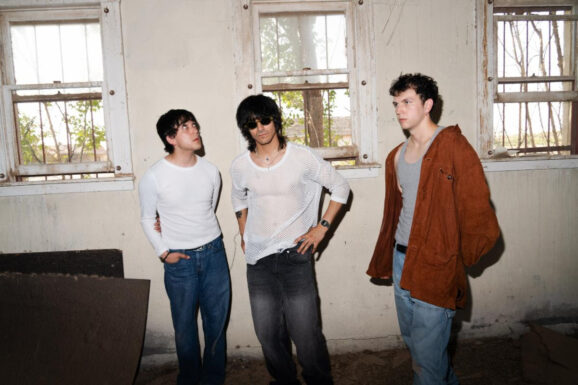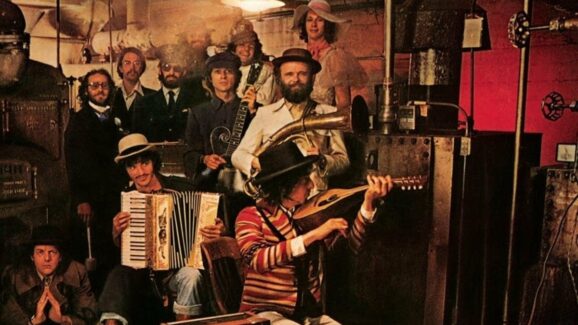\The news that recently came across the wire about Gibson Guitar’s impending bankruptcy was not only discouraging, but it also a sign that we’re nearing the end of an era. The company supplied its instruments to so many musicians of note, it literally became an indelible part of the musical landscape, both as a brand and as a vital instrumental element. According to an article in the Nashville Post, the reason for the company’s demise is not only due to its declining guitar sales, but also to its accumulated debt. It’s a bad combination that doesn’t bode well for one of America’s most venerable instrument manufacturers.
Still, the Gibson guitar will always be revered by those who have called it into service over the years. As a way to rekindle those memories, Glide offers our list of some of the great guitarists whose work and has become synonymous with the Gibson sound…
Jeff Beck was first attracted to the Gibson when he was with the Yardbirds in the mid ‘60s. He became so fond of the instrument in fact that he posed with it for the drawing that adorns the cover of his Blow By Blow album. The guitar pictured was a Les Paul, a signature model named for one of Gibson’s namesake architects and the guitarist that originally inspired Beck in the first place. Many musicians say that the Les is best, making it little wonder that it remains a powerful weapon in Beck’s formidable guitar arsenal even now.
Duane Allman favored four Gibson Les Pauls — a 1957 Les Paul Goldtop with PAF pickups, a 1959 cherry sunburst Les Paul, a 1958 tobacco sunburst Les Paul and a 1968 cherry SG which he used for his distinctive slide guitar work. It was the latter that made his contributions to the Allman Brothers, Derek and the Dominos and his numerous session projects such an indelible part of his legacy. An formidable musician even at an early age, his premature death cost the music world one of its great players. Thankfully, his legacy lived on in bands in the later editions the Allman Brothers, as well as those they so obviously influenced — which includes practically every jam band that’s ever immersed themselves in the blues.
Eric Clapton favored a Gibson Les Paul throughout his early career, utilizing the instrument early on while with John Mayall’s Bluesbreakers, the Yardbirds, Cream and Blind Faith. He’s also been generous with his instruments, donating one of them to the Crossroads Centre (It sold for $750,000) and giving another to his pal George Harrison who subsequently named it “Lucy.”
Jimi Hendrix may have been known primarily for his Stratocaster, but he was also partial to several Gibsons during his career. He owned a SG Custom, a Flying V, a Les Paul Special and a Les Paul Custom. Hendrix was said to have favored his Gibsons for his bluesier numbers, and in
1970, during the last year of his life, the company gave him two custom left-handed models, a Flying V and an ES-345. In fact, one of the company’s later signature models was inspired by that Flying V, even going so far as to replicate the psychedelic floral design which Hendrix himself had hand painted on his original.
Keith Richards has used numerous makes of Gibson guitars throughout his career, mostly Les Pauls and ES models, although he’s also utilized Firebirds, a Flying V, an SG, an L6S and a Melody Maker on several occasions. When, in 1964, Richards bought a 1959 sunburst Les Paul, he was considered the first British musical celebrity to own one. He used it throughout the Stones’ crucial middle period beginning in 1966, up until the time he sold it to future Stone Mick Taylor. Keith has continued to use Gibsons onstage for every Stone tour, a notable endorsement considering the fact that Keef has always been considered an essential guitar slinger, both past and present. And when one thinks of Stones songs, it’s always Richards’ riffs that come to mind.
Jorma Kaukonen describes himself as a “Gibson nut,” and it’s little wonder when one considers the fact that he played Gibsons throughout his career with the Jefferson Airplane and later with Hot Tuna and as a solo artist. As a musician who’s never been afraid of expanding his artistic parameters, from the psychedelic sounds of the Airplane to the rootsy blues of Hot Tuna and his own individual outings, he’s relied on Gibsons to underscore his authenticity. Although he favors Martin Guitars these days, he still calls upon his Gibsons for Hot Tuna’s acoustic shows. Electric or acoustic, Kaukonen and his guitars have etched their own niche.
Start at
John Lennon famously used a J-160E throughout his stint with the Beatles, and borrowed Donovan’s J-45 while in India to compose several of the songs that would later end up on the Beatles’ so-called White Album. Later, during his solo career, he favored a Les Paul Special and a modified Les Paul Junior. Gibson repaid his loyalty by manufacturing a limited-edition replica of his J-160E as well as a Les Paul “inspired by” Lennon’s guitar. While George Harrison, also a Gibson devotee, may have been the one who came up with the Fabs’ classic leads, Lennon’s style was also dynamic and distinctive as well.
Jimmy Page is partial to a 1959 Les Paul he acquired from fellow Gibson devotee Joe Walsh, as well as numerous other Les Pauls that he’s played live and on record throughout his career. One of his prized possessions, a Black Beauty, was stolen in 1970 and never recovered. It may have softened the blow when Gibson later released a Jimmy Page Signature model Les Paul replicating the features of another of his favorite guitars. Page was also known for his double neck guitars which he famously played onstage with Led Zeppelin while performing such signature songs as “Stairway to Heaven,” “The Rain Song” and “The Song Remains the Same.”
Pete Townshend played (and smashed) many Gibson guitars throughout the Who’s prime years, 1967 through the end of the ‘70s, while also relying on a Gibson SJ-200 for his side sojourns on acoustic guitar. Being the unique stylistic that he was, it could be claimed that Gibson contributed mightily to his signature sound. That’s especially noteworthy considering the fact that as the band’s acknowledged mastermind and sole guitarist, his fretwork was of prime importance. And yes, he did smash several Gibsons on stage during his peak of frenzy and destruction, but he did show some signs of remorse when he named a song on his first solo album, Who Came First, “Sheraton Gibson.”
Slash has always made Gibson the prime instrument in his guitar arsenal. Considering the fact hat he’s a musical chameleon — a relentless rocker one moment and a delicate strummer the next — it not only says something about his versatility, but also about the trust he has for the flexibility and durability of Gibson guitars makes his Gibson almost as iconic as his top hat.












2 Responses
Except Jimmy’s Black Beauty was found a year ago. https://www.guitarplayer.com/players/jimmy-pages-long-lost-gibson-black-beauty-has-been-found
It’s important to know that the appetite for destruction guitar was not a gibson, but a luthier made copy.